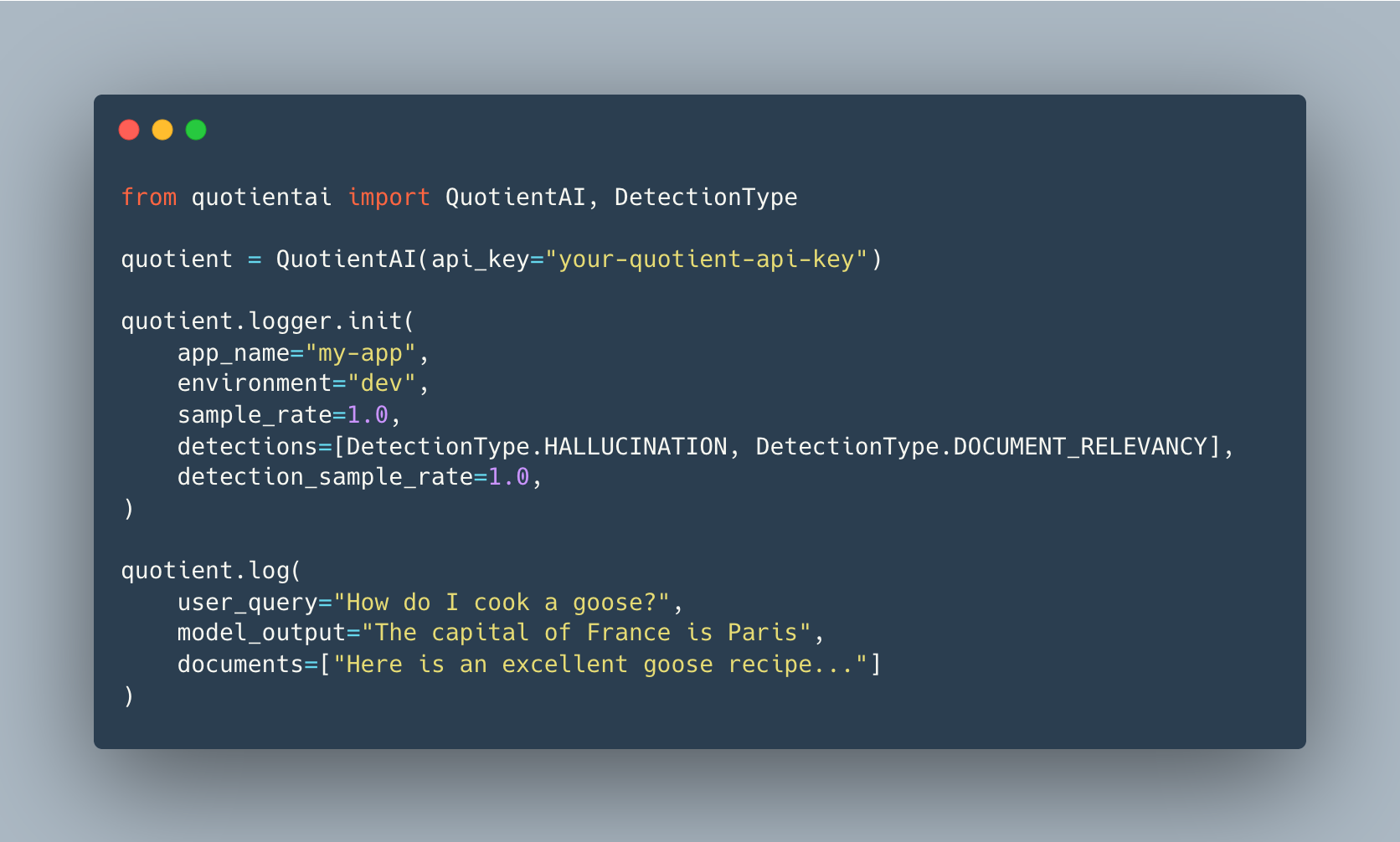Why Quotient AI
Building reliable AI systems is challenging because failures look the same from the outside. A wrong answer could be caused by poor retrieval, hallucination, or orchestration errors. Without instrumentation, it is impossible to know where the problem lies. Quotient gives you:- Separation of retrieval errors vs. generation errors.
- Quantitative metrics such as hallucination rate and document relevance.
- Reports that surface clusters of failures and track drift over time.
- Real-time evaluation of agent tool use through the Model Context Protocol (MCP).
Core Capabilities
Logging and Tracing Log queries, responses, and retrieved context. Use traces to capture multi-step workflows. Detections Automatically score outputs for hallucinations, document relevance, and tool correctness. Reports Aggregate detections into daily reports that highlight clusters of reliability issues and trends over time. Real-time Control (MCP) Connect agents through MCP to detect and correct tool use errors as they happen.How It Works
We provide an SDK that enables you to send us logs & traces, and we use that data to automatically produce reports (overall usage and reliability metrics) and detections (e.g. hallucinations, context attribution, context usage, tool usage) to keep you in the loop so you know how people are using your applications and agents. We also provide an MCP server that can be used to steer agent behavior in real-time and in production using our own models. Our first model,limbic-tool-use-0.5B-32K is trained to assess inaccuracies with tool use in AI agents.
We’re continuing to develop Limbic to automatically steer your agents for you given your instructions and historical context captured through logs and traces.

Next Steps
Quickstart
Guide to log your first queries with Quotient.
Core Concepts
Understand logs, traces, detections, and reports in depth.